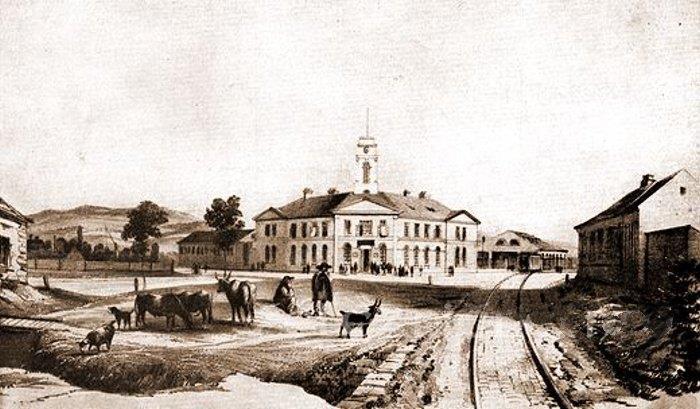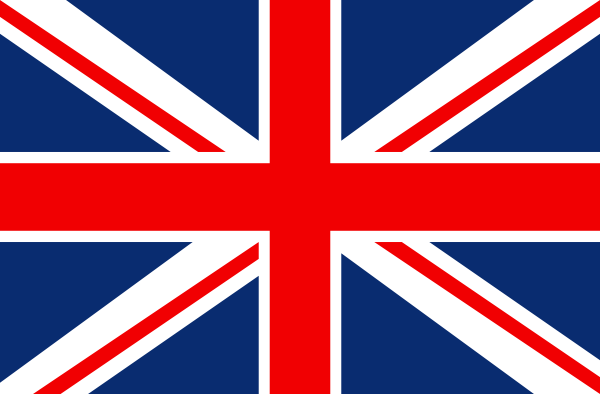English below

Budova, pred ktorou práve stojíš, je pamiatkou na historicky prvú železnicu na území Slovenska. Do dnešného dňa tieto pamiatky existujú už iba dve. Tá druhá je staničná budova vo Svätom Jure.
Práve táto železnica odštartovala rast mesta do takej podoby, ako ho poznáme dnes.
Myšlienka vybudovania konskej železnice sa zrodila v hlavách 17-tich grófov a obchodníkov začiatkom roka 1836, pôvodne iba s úmyslom nákladnej dopravy. Táto myšlienka sa zmenila, keď predstavitelia mesta vyjadrili podporu bezodplatným uvoľneným pozemkov pre výstavbu železnice.
Železnicu a obslužné budovy navrhol a naplánoval František Oto Hieronimi v rokoch 1836 az 1848. Konkrétne táto budova bola postavená počas rokov 1839-1840.
Dňa 27. septembra 1840 bola konská železnica odovzdaná do prevádzky po stanicu Svätý Jur, prevádzka do Trnavy a Serede bola predĺžená v roku 1846.
Zaujímavosťou je, že trať mala pôvodne viesť cez Modru, ale mesto Modra "nesúhlasilo s výstavbou „nemorálnosť a hriech“ rozširujúcej železnice na svojom území" [Časopis Súčasnosť (č.37/1839)] a trať teda bola presmerovaná cez Šenkvice. Modra sa svojej železnice nikdy nedočkala.
Cesta z Bratislavy do Svätého Jura trvala zhruba 50 minút, do Trnavy asi 150 minút.
Koniec konskej železnice z Bratislavy do Trnavy prišiel v roku 1872, keď padlo rozhodnutie o jej prebudovaní na parnú železnicu, ktorá bola po ročnej odstávke spustená 1. mája 1873.

Building, in front of which you are now standing, is a heritage site of the first railway built on the area of current Slovakia. Until today, there are only two such sites left. The other one is the railway station in Svätý Jur.
And exactly this railway started the growth of this city to the current state.
The idea of building a horse-drawn railway has come from the minds of 17 earls and merchants at the beginning of year 1836, originally only with the goal to build a cargo railway. This original idea has been changed, when the city council supported the idea by giving away the land under the future railway for free.
The railway itself, including its service buildings, has been planned and designed by František Oto Hieronimi between years 1836 and 1848. Specifically, this building was built during years 1839-1840.
On September 27th 1840 the horse-drawn railway was open for public use on the segment from Bratislava to station Svätý Jur, further segments to Trnava and Sereď were opened in 1846.
It is interesting to mention, that the original railway was supposed to cross the town of Modra, however the council of Modra was "against building an immorality and sin spreading railway on its territory" [Journal Súčasnosť (č.37/1839)] and the railway was re-routed via Šenkvice. Since then, Modra has never got their railway connection.
Travel from Bratislava to Svätý Jur took about 50 minutes, to Trnava approximately 150 minutes.
The end of this horse-drawn railway from Bratislava to Trnava came in the year 1872, when it was decided to reconstruct the railway to enable operation of steam powered trains. The reconstruction was finished after one year and a steam powered railway was open for public on May 1st 1873.
Virtual Reward - 2017/2018
This Virtual Cache is part of a limited release of Virtuals created between August 24, 2017 and August 24, 2018. Only 4,000 cache owners were given the opportunity to hide a Virtual Cache. Learn more about Virtual Rewards on the Geocaching Blog.
Zdroj obrázkov / Image source